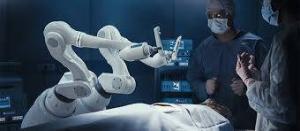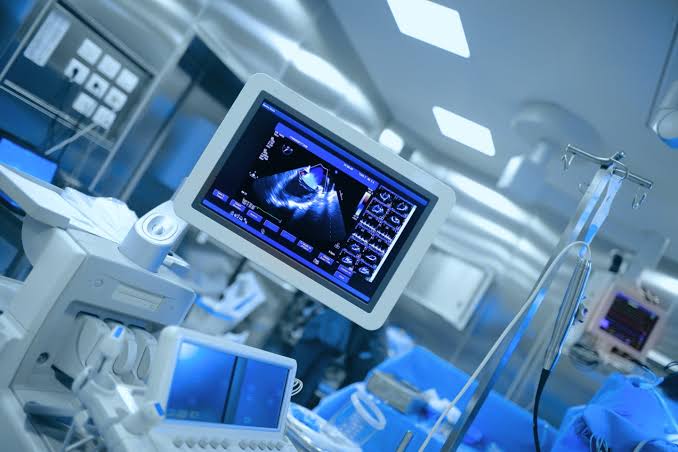When you purchase through links on our site, we may earn an affiliate commission. This doesn’t affect our editorial independence.
Our daily lives are impacted by technology in many ways. It influences the way we play, work, and conduct business. Healthcare has also been greatly impacted by technology.
Technology has long influenced how we deliver, receive, and pay for healthcare, from the development of the stethoscope and X-ray machines to the introduction of wearable medical technology and the application of artificial intelligence (AI).

New developments in medical technology are lowering expenses and raising the standard of patient care. The prospect of these and other possible advantages will probably keep pushing technology adoption in the healthcare sector.
The medical community has historically been sluggish to embrace new technologies, but this is beginning to change. It is becoming hard for healthcare practitioners to overlook the prospects and potential advantages offered by these technologies. For instance, the widespread use of mobile devices by patients and healthcare professionals has made it possible for improved communication that is advantageous to both sides. New and more efficient disease detection and treatment techniques are being developed thanks to the huge connectivity provided by cloud-based apps and Internet of Medical Things (IoMT).
Web and mobile app technologies have also promoted improved patient education, enabling people to participate more actively in selecting from a variety of treatment options.
The usefulness of medical technology
Some of the ways medical technology have become useful include:
1. Public Health Improvement
The COVID-19 virus’s appearance showed how urgently the medical community must respond to public health concerns. For healthcare systems to readily exchange information on topics like available medical treatments and the spread of disease, technology is essential. Organizations can create plans to reduce the impact of illnesses on the general population by exchanging information more effectively. Better health outcomes may result from the ease with which data interoperability and information sharing are made possible by cloud-based services.
2. Improved Diagnosis and Treatment
The growing usage of mobile devices by healthcare professionals is facilitating better patient diagnosis and care. No matter where they are, practitioners can instantly access medical records and communicate with colleagues about a patient’s status. From their offices or wherever else, practitioners can make better judgments about treatment and care if they have a tablet computer, access to cloud-based service, and an internet connection.
3. Electronic Health Records
The utilization of health information technology, including electronic health records (EHRs), has contributed to the control of healthcare costs. According to some studies, hospitals and other healthcare organizations save a significant amount of money per patient when they switch from paper records to effectively integrated electronic health records. Although some office-based doctors have been slow to implement EHRs in their practices, they are now catching up. The paucity of technical resources in their offices and the regulatory concerns around the processing of EHRs may have worried them. However, they are fully aware of the advantages that could result from taking the action.
4. Seamless Workflow
For many healthcare organizations, medical technologies can help speed up the administrative workflow. For instance, switching to electronic health records (EHRs) can remove the need to transfer messenger files or patient records between offices. Practitioners can reduce the time and cost of processing patient data with an enhanced workflow. Patients receive more prompt treatment recommendations and quicker answers to their health-related questions. For nurses and doctors who must keep an eye on and promptly handle patient concerns, increased connectivity and the cloud’s centralization of healthcare data are simplifying many duties. A single staff can monitor several patients with the help of the appropriate technological solutions, improving treatment while requiring less labor.
5. Efficient Scheduling
Missed appointments are reduced by using interactive and electronic appointment scheduling. Using web portals and cloud-based applications to let patients make and modify their appointments lowers the frequency of missed appointments and spares medical facilities money on time wastage. Changes can be promptly communicated to care providers, who can then reschedule other appointments to minimize downtime.
6. Minimizing Errors
Medical errors could be decreased by the use of modern technology. For instance, digital patient order input can assist reduce human error that occurs when staff members manually copy information or attempt to decipher handwritten notes. Modern technologies may also contribute to fewer mistakes. Before recommending a new medication, doctors may, for instance, utilize AI techniques to swiftly review a patient’s electronic medical history to find any potentially harmful drug interactions or allergic reactions.
7. Improved Medical Device Management
Many individuals use medical gadgets to track their recuperation following surgeries and other treatments, manage chronic diseases, and preserve their health. These gadgets are increasingly using integrated IoMT sensors, which allow for remote monitoring and prompt problem-solving. Monitoring software can notify providers of abnormal results so they can take proactive measures to fix problems before they become serious. Patients can save money on their journey and time. Patients can get timely advise about when to visit their healthcare institution for treatment and when to service or replace their equipment when gadgets are remotely monitored.








